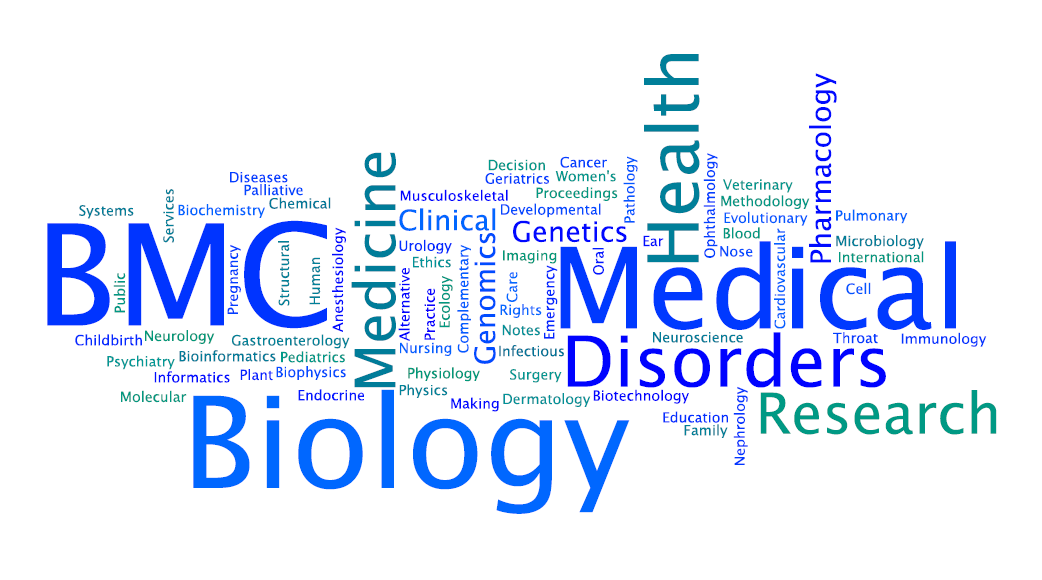Sports medicine comes to the BMC-series • Biochemistry insights into blood clotting • The ethics of baby hatches • Pharmacology, an on target approach • Cystatin C in ocular inflammation • Left handed sugar gliders? • BMC Research Notes needs you

Sports Medicine: BMC Sports Science, Medicine and Rehabilitation launches
With the prevalence of obesity rising on a worldwide scale and the introduction of public health policies aimed at increasing levels of exercise at a population level, the growth of sports science and medicine as a field of research is inevitable. BMC Sports Science, Medicine, and Rehabilitation brings sports medicine to the BMC series, with research encompassing a wide variety of disciplines. It seeks not only to improve levels of mental and physical fitness but also to advance the treatment and prevention of injuries related to sports and exercise, along with improving overall health and nutrition. BMC SSMR considers manuscripts on all aspects of sports medicine and the exercise sciences, including rehabilitation, traumatology, cardiology, physiology, and nutrition. Read more about the journal in our recent blog posting.
Biochemistry: The role of HCII in thrombin inhibition
N-terminal acidic extension of Heparin cofactor II (HCII 1-75) binds thrombin with a higher affinity than glycosaminoglycans (GAGs), suggesting that this region of Heparin cofactor II (HCII) is required for binding of thrombin exosite 1. William P Sheffield and colleagues’ study published in BMC Biochemistry achieved these convincing results by expressing the N-terminal acidic extension of Heparin cofactor II in an isolated form, thus characterizing it to a degree not previously possible.
Medical Ethics: Should we maintain baby hatches?
Baby hatches are secure places where babies can be left to be found and put into care. A similar concept, known as the foundling wheel, was common in the medieval period, but the use of baby hatches in contemporary society raises a number of ethical concerns. Do baby hatches induce parents to abandon children? Are they abused for selfish reasons? Using their experiences of a baby hatch in Japan, known as the “Stork’s Cradle,” Should we maintain baby hatches in our society? examines the many ethical criticisms of baby hatches to discuss whether baby hatches should exist in the contemporary world.
Image of the month

Stick insect (Timema poppensis) perfectly camouflaged on its host, Redwood (Sequoia sempervirens), California. This image was judged the Overall Winner in the 1st BMC Ecology Image Competition, and was taken by Moritz Muschick of the University of Sheffield.
Pharmacology: Label-free sorting of opioid ligands is right on-target
Selectivity is one of the most important pharmacological properties of drug molecules and is crucial in the determination of their in vivo efficacy and therapeutic index. Thus, the generation of a comprehensive overview of the binding and functional selectivity of ligands for a specific receptor family is a critical step in drug discovery and development. In an article published in BMC Pharmacology and Toxicology this month, Megan Morse and colleagues used a newly developed label-free integrative pharmacology on-target (iPOT) approach to systematically survey the selectivity of a library of opioid ligands against the opioid receptor family. Morse et al. were able to effectively sort the ligands into distinct clusters based on their binding and functional selectivity using an approach that may have useful implications for future lead compound selection.
Evolutionary Biology: Upright marsupials show hand preference
In the news this month from BMC Evolutionary Biology, sugar gliders (Petaurus breviceps) and grey short-tailed opossums (Monodelphis domestica) display a sex-related hand preference in the opposite direction to that of placental mammals and with a stronger tendency when in an upright posture, a trait only previously known in primates. Dr Yegor Malashichev from Saint Petersburg State University who led this study explained why they think this has evolved, “Marsupials do not have a corpus callosum – which connects the two halves of the mammalian brain together. Reversed sex related handedness is an indication of how the marsupial brain has developed different ways of the two halves of the brain communicating in the absence of the corpus callosum.” Read the full article here.
Ophthalmology: Does cystatin C play a role in ocular inflammation?
An interesting paper in BMC Ophthalmology this month highlights that Human cystatin C is more highly expressed, and expressed in a wider range of cells, in the conjunctiva of people with pterygium. This prospective, non-randomized study suggests HCC may have a role in inflammatory ocular conditions such as pterygium, a fibrovascular lesion of the ocular surface, and highlights the need for further work in this important area.
Research Notes: The power of sharing
BMC Research Notes has recently published an article from authors in Mozambique highlighting the need for complete record keeping and sharing records between different organizations when treating HIV patients, particularly when co-infected with other diseases such as tuberculosis.
BMC Research Notes is currently seeking to expand their Editorial Board in the areas of HIV, tuberculosis and public health. If you, or a colleague, would be interested in joining the Editorial Board as one of our Associate Editors, please contact us for more information.
![]() Follow @BMC_series
Follow @BMC_series
![]() Watch our YouTube channel
Watch our YouTube channel
![]() Browse our list of journals
Browse our list of journals
![]() Subscribe to updates from the blog
Subscribe to updates from the blog
Comments